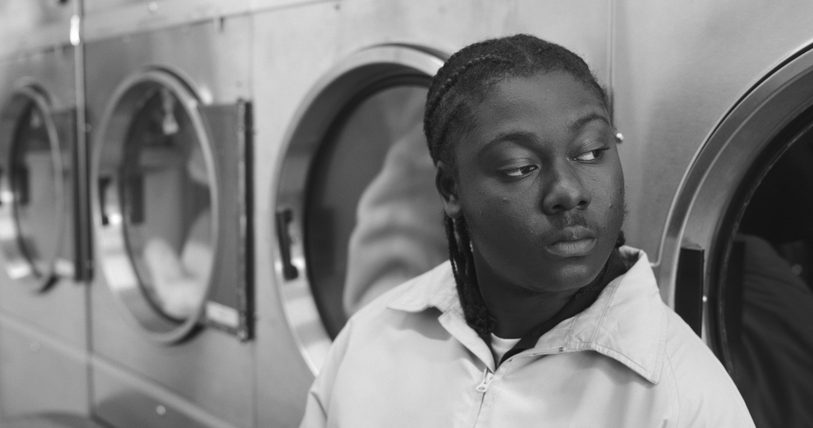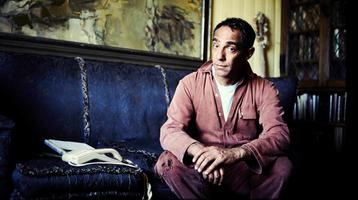
Zarina Muhammad
Race isn’t real. It is a social construct that plopped out the arse end of the colonial imagination to justify hierarchies. It isn’t biological fact — it has shifted over time and will continue to do so.
Countries aren’t real. Borders are drawn by people, God knows why, but they aren’t a natural fact. They have shifted over time and will continue to do so.
Land is real. We emerge from it (if you believe certain creation myths). We are sustained by it (it feeds us, it is surface, support, home). We return to it (grounding, burial). Land is unequivocal, absolutely not abstract, very material, very fact. It’s there, there you are, you’re on it.
///
Mertoutek is a village in the Northern Ahaggar Mountains, deep central Sahara, Southern Algeria. It is very remote. In the 1960s, Algeria was under French colonial occupation. The French conducted a series of nuclear tests in the Northern Ahaggar Mountains, at a Military Experiments Centre in a village called In Ekker (about 60km from Mertoutek). The French detonated 13 bombs in underground shafts, and 4 on a shooting range above ground (in simulated and controlled accidents, to assess atmospheric plutonium contamination levels). During these detonations, the villagers of Mertoutek were evacuated for 24 hours, the French told them it was safe to return. The tests took place from November 1961 until February 1966. By the time the tests ended, Algeria had gained its independence. 12 of the 13 underground tests weren’t contained, they produced radioactive leaks. There are giant craters in the mountainside. The land is contaminated, so is the water. 60 years later, when the villagers in Mertoutek wash before prayer, the water hurts their skin.

Arwa Aburawa and Turab Shah, And still, it remains (2023), film still. Courtesy of the artists
And still, it remains is a film by Arwa Aburawa and Turab Shah. The villagers of Mertoutek walk through sandy furrows. They water their fields, they harvest spring onions, they file into the mosque for prayers, they play games with stones, they pour tea, they recline in the shade of large rocks. They merge, a disembodied voice that shifts from person to person. They speak of water, life, God, ancient peoples, and a time when they thought the world had ended (the earth shook and dust engulfed them, obscuring the sky, so dark they couldn’t see the river, and it seemed like the mountain itself had exploded). The wind rises, sand shifts, water trickles — the elements do half the talking. The end of the world never ended: “After a week or two, people got affected by the nuclear poison.” It is never clear who is speaking, they never address the camera: “The poison is still here.”
The sun rises over the mountains. The sky is orange. The desert ripples out in an endless expanse, the vast Sahara, a landscape without scale. The village itself is bleached out and bright, palm trees waft at the centre of the camera’s vision. The wind slices through the village of Mertoutek. It is material, a bodily presence that steps in as the villagers themselves disappear from the frame. 60 years after the first nuclear test, the wind carried a cloud of contaminated Saharan sand over the Mediterranean Sea, back to France. This is divine justice, narrative closure.
///
Yeah, maybe there will be retribution. Maybe the Earth remembers, takes its revenge. Maybe the land is a witness and evidence. Maybe the landscape can step in like a protagonist, morally grey anti-hero rounding out the fourth act climax. Maybe human life was always the supporting cast, just the backing vocals to something playing out elsewhere. Maybe it is only at the scale of human life that we can see how that planetary scale works.
///

Arwa Aburawa and Turab Shah, I Carry It With Me Everywhere (2022), film still. Courtesy of the artists.
I Carry It With Me Everywhere is a film by Arwa Aburawa and Turab Shah. Shot in black and white, multiple characters closely confront their understanding of belonging. It’s a tense kind of narration, there is so much sadness, frustration, confinement.
Nigel Farage would have you believe that mysterious malevolent migrants are lurking round every corner, waiting to jump out at you and yell: I LOVE SMALL BOATS! GIMME YOUR JOB, YOUR HOUSE, YOUR GP APPOINTMENT. This is a narrative that is wrong, obviously, but challenging this narrative still flattens something. You challenge: they aren’t here to steal your job etc, they’re here to make a better life for themselves and their families, they contribute more than they take, we are richer for having them. You challenge and sit back, smug in this warm rebuttal. Maybe that is correct. But being here is hard. Surely not everyone is glad for a British passport, papers, Right to Remain. Maybe migration comes with regret, misery, disdain for the country you have arrived in, maybe it alienates you from the place you left behind. It is almost impossible to talk about that in mixed company, because it seems like a dogwhistle of its own (if you don’t like it, you know where the door is etc etc).
— None of this needs saying, I am undermining your intelligence by spelling it out, but I need to step over that to land in this weirder place. I Carry it With Me Everywhere explores a suggestion: it’s not that some of us do or don’t belong here or there. None of us belong anywhere. Maybe we belong to God or to each other, but we can’t belong to a place. That would trap us. Countries and nations aren’t real. Migrants aren’t real. Borders aren’t a natural fact! Borders are drawn by people, they can shift, they can disappear.
///
On Christmas Eve 1968, Apollo 8 was in the Moon’s orbit. An astronaut onboard, Bill Anders, took a picture of the Earth rising from the Moon’s shadow. The Moon’s surface forms a milky-luminous horizon, and far in the distance, the Earth is small, blue, a swirl of clouds. The edge of some landmass is only a murky splotch, barely visible in the gap between rippling gases. It has been called ‘the most influential environmental photograph ever taken’ — seeing the Earth from this perspective signalled a societal shift. The world is so small, so insignificant against the dark soup of space. It is so fragile, so real, all we have.
There are two ends to the spectrum: human >>> planetary. I can’t decide which is truest. At a human scale we can understand discrete experiences: exploding mountains and the despair of separation. At the planetary scale we can understand impact and interrelation: 60 years later the wind takes revenge, borders might dissolve between us if we let them. Maybe a film can run along the scale, connecting it end to end like sinew.
Zarina Muhammad is an art critic from and based in London. She runs the White Pube (with her collaborator, Gabrielle de la Puente) where they publish reviews and essays about art, exhibitions and culture at large. You can find them at thewhitepube.com. Their debut novel, Poor Artists, is out now.



